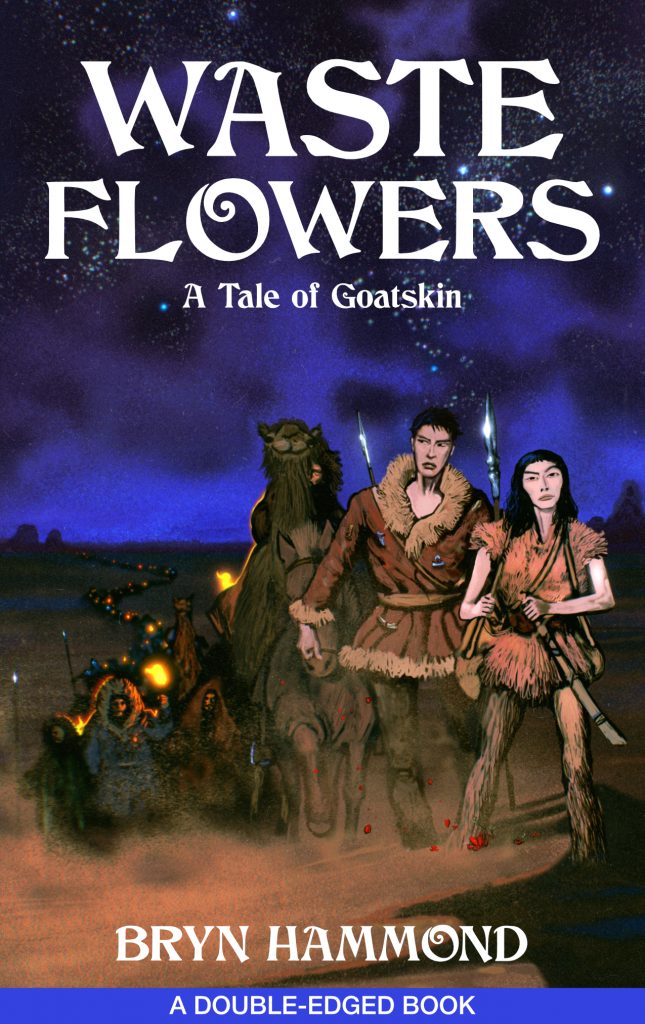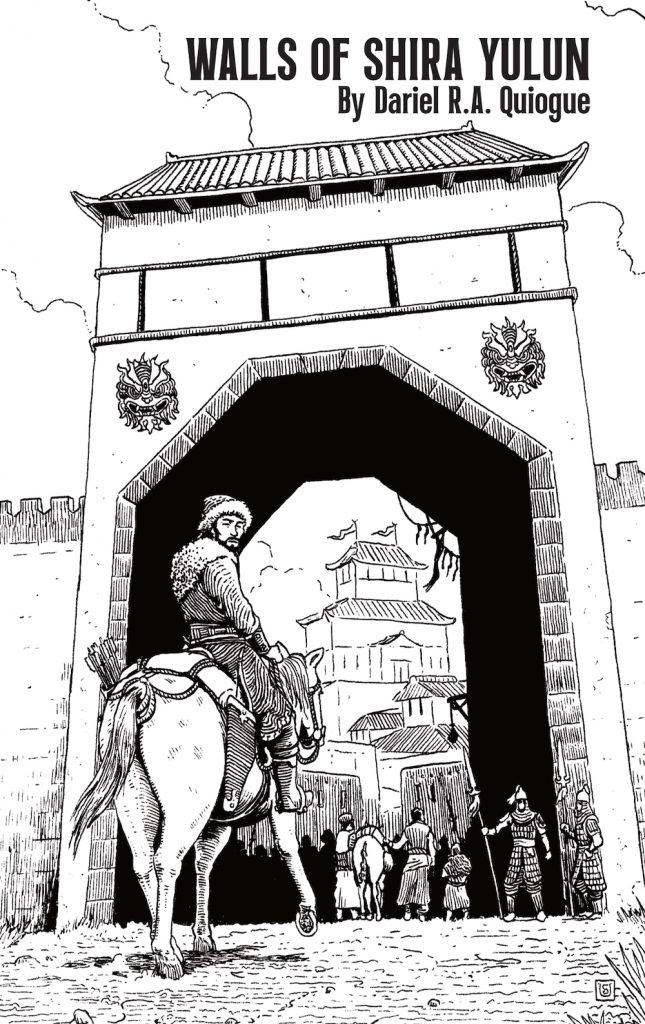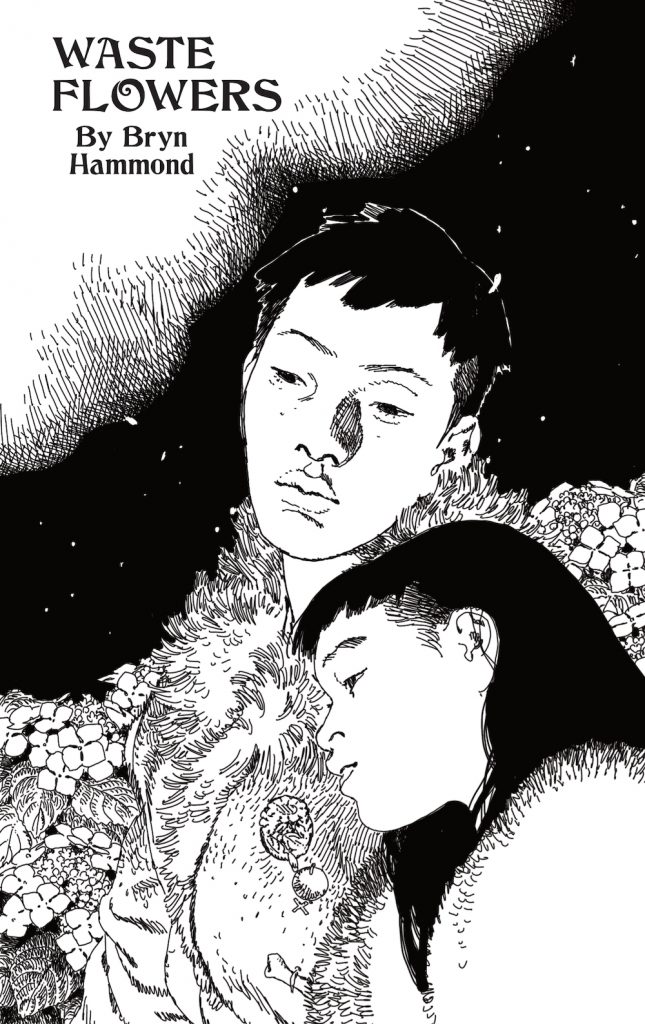by Anthony Perconti
in Issue 158, March 2025
One of the things I find compelling about the modern renaissance in sword and sorcery fiction, is way that some authors have shifted their focus away from traditional Eurocentric settings (or fictional analogs thereof). Hey, it’s a wide swath of human history, why not set adventures in places and historical time periods outside of the Anglo/ European purview? For every Howardian inspired sword and sorcery tale out there, how many can you point to that are influenced by say, The Warring States period or perhaps the mythic Vedic traditions? Fortunately, we live in a time of abundance-where there is a proverbial lid for every pot. Traditional sword and sorcery fans have a myriad of stories to choose from (either repackaged from the original pulps, or from post-pulp writers) working in that classic tradition. It’s no accident that many of the poorer examples are labeled “Clonans”, after all. But for readers looking for swashbuckling fare from off the beaten path, Brackenbury Books has the perfect remedy to the same-old, same old.
In the tradition of those classic Ace Doubles, Double -Edged Sword and Sorcery features two novellas; Walls of Shira Yulun by Dariel R.A. Quiogue and Waste Flowers, by Bryn Hammond. These two tales complement one another perfectly. They both deal with outsider characters, butting up against the norms and strictures of dominant societies, with elements of the fantastic in play as well. Orhan Timur is at odds with the Wulong Empire (as well as an outcast of the Murjen hosts), while Goatskin Duzmat and her lover Qi Miao stem from a nomad society and a criminal organization, respectively. The protagonists of Shira Yulun and Flowers may be outsiders, but they are outsiders that are fiercely protective of their comrades and ‘families of choice.”

Walls of Shira Yulun finds the renegade, Orhan Timur making a mad dash to the titular city in order to save the life of an old friend and mentor. It turns out that Shira Yulun is on the verge of a full-scale invasion and Ong Sechen (and his bride) are in mortal danger. Unfortunately, for the Snow Leopard, the dark shaman Qara Erke is hot on his heels. The dark shaman is setting into motion the demise of Timur through sorcerous (and realpolitik) means. Quiogue does an exemplary job of setting a breakneck pace in Shira Yulun; the chapters are short and downright punchy, with a heavy emphasis on action. The story harkens back to the pulp antecedents of the sword and sorcery genre. Quiogue peppers in much bombastic language throughout his tale. Take for instance, this little gem taken from the chapter titled, “The Traitor’s Gate;” “The City has no time for you,” Orhan snarled. His saber licked out, a coppery gleam in the red torchlight, and the Wulongan crumpled, windpipe severed.” Mind you, this is still relatively early on in the novella. There are eighteen more (pulpy) chapters to go. Walls of Shira Yulun moves like an overpacked freight train, with the brakes ripped out. The action (and stakes) are perpetually escalating, with some thoughtful asides and ‘quiet’ moments that focus on character development. Take for instance, Orhan Timur interactions (and not to mention, internal struggles) with the character of Faiyen. I would contend that Dariel Quiogue, in his character of Snow Leopard has crafted a protagonist not so much informed by those sword and sorcery heroes of yore (although there is some degree of influence), but rather from antiquity. Orhan Timur to me is reminiscent of a (secondary world) Silk Road Odysseus; wily and canny, coupled with a tactical mind par excellence (Quiogue illustrates early on, just how wily, with regards to Wulongan temple architecture). The Snow Leopard is a formidable swordsman to be sure, but this is not the only weapon in his arsenal.

If Walls of Shira Yulun is reminiscent of those classic pulp tales, then Waste Flowers is informed by a more scholarly sphere of influence. Bryn Hammond, as the foremost practitioner of what I call ‘anthropological sword and sorcery,’ is the LeGuin to Dariel Quiogue’s Lamb. Hammond delivers another tale of her outlaw duo, Goatskin and Sister Chaos. Flowers is set in the historical period of Genghis (the author uses the spelling, ‘Tchingis’) Khan, along that wide-open frontier in and around Northern China and Southern Mongolia. Goatskin lands a caravan guard gig for Qi Miao and her Scarlet Jacket gang of marsh outlaws. The merchant caravan’s ultimate destination is the steppe kingdom of Temujin. From the onset, what seems as a fairly straightforward road story, takes a hard turn into the realms of the supernatural. Bryn Hammond, through her scholarly chops, makes it abundantly clear that the world of the Mongols is suffused with the miraculous (defined broadly; as in, involving a supernatural power or agency). Hammond’s protagonists are beset by a ghostly officer corps of charioteers, scarlet hued (alien?) flora that reanimate the dead, and the bones of long extinct, hungry ‘dragons.’ In the section titled ‘At the Black Palace,’ the author even has the duo descend into a version of the Mongolian underworld, where they encounter the Black King, Irle Kahan. ‘The Dead In Battle’ and ‘The Tail’ deal with the ramifications of the outlaw band’s little sojourn into the land of the departed. In these two sections, the author posits a very interesting thought experiment; in a world in which the supernatural exists, does loyalty and brotherhood (or perhaps a more accurate term would be, andahood) expire with a person’s bodily demise? Jamuqa is a fascinating character, due to his shifting and mercurial nature. Though a man of honor (much like Sister Chaos’ little band of scapegraces), I was left with the question of; is it possible for a person to serve two masters? And by the tale’s conclusion, I was asking this question not only of Tchingis Kahn’s anda, but of Qi Miao as well. I suspect that readers will have to wait for the next installment in this series to find out. I was also fascinated at how an outsider group like the Mongols in this story, were able to utilize a unique psychological (as well as supernatural) advantage against a much larger force of the Chinese army. One can see how Tchingis Kahn and Jamuqa are opposite sides of the same coin, to be sure.


In addition to two fantastic stories penned by authors firing on all creative cylinders, Brackenbury Books have brought their A game with respect to the twin flip covers. Walls of Shira Yulun features art by the singular Artyom Trakhanov, while Waste Flowers sports a cover by sword and sorcery maestro, Goran Gligovic. I’m always down to sing the praises of that future history comic, First Knife; Trakhanov brought such a unique visual aesthetic to Roy and Bensen’s intelligent scripts. While on the Goran front, not only does his Elric print hang proudly in my office, but so does his Corum as well. Needless to say, I’m a fan of these two artists. Simon Underwood’s striking interior illustration of Orhan Timur riding into the city gate with that hunted look on his face, certainly sets the tone of what’s to follow. To say nothing of Linnea Sterte’s sublime (Kalutaesque) portrait of Goatskin and Sister Chaos. Double-Edged Sword and Sorcery is the real deal; it is a perfect combination of great storytelling, complemented by absolutely striking artwork. How can you beat that?
©March 2025, Anthony Perconti
Anthony Perconti lives and works in the hinterlands of New Jersey with his wife and kids. He enjoys good stories across many different genres and mediums. His reviews have appeared previously in Swords & Sorcery Magazine.
Leave a Reply